We’re here to provide you with more information or help answer any questions you might have. Send us a note and we’ll get back to you as soon as possible.



EarthOil by Univar Solutions offers a complete range of woody essential oils. They are obtained by steam distillation to guarantee a high-quality product with a powerful fragrance.
Inhale a warm comforting aroma
Everyone loves taking a stroll through the forests and breathing in the fresh aromatic smells of the woods. From the soft scent of the Juniper Berry Oil to the strong rich aromatic Sandalwood Oil, we can be transported to dark, lush rain forests and to happy memories or places of tranquillity.
Our woody essential oils have a lot in common: they all bring that calming effect while boosting upbeat, positive emotions. Discover some of them below.
Balsam Copiaba Oil
Copaiba trees are mainly found in tropical South America. They can reach between 15-30 meters in height and branch out only at the top of the tree. They produce leathery-like leaves with small white flowers and fruit pods containing on average 2-4 seeds, and also a sticky substance called oleoresin harvested by tapping or drilling holes into the trunk of the tree. This resin is then steam distilled to extract the copaiba essential oil. On average, a single tree can produce approximately 40 litres of oil per year, offering a sustainable rainforest resource that can be harvested without harming the tree or its environment. Although it is a relatively new oil, the resin that it is extracted from has been widely used in South America for hundreds of years, in traditional medicinal remedies.
Balsam Copaiba Oil provides a warm, spicy, balsamic, resinous and woody aroma that is highly unique. It has a somewhat peppery and metallic scent, with similarities to juniper, patchouli, and smoky teas. Its fragrant, vanilla-like aromatic profile offers a natural component that works as an excellent alternative to traditional vanilla oil. With its deep, rich, earthy and grounding aroma, it belongs to the base perfumery notes and can be used as a fixative in natural aromatics. The creamy, amber odour of this oil has made it a staple in both the pharmaceutical and perfumery industries, as it can be blended with a wide variety of different ingredients to enhance olfactory transitions.
Name: Balsam Copaiba Oil (Organic)
INCI name: Copaifera reticulata balsam Oil
Botanical name: Copaifera reticulata


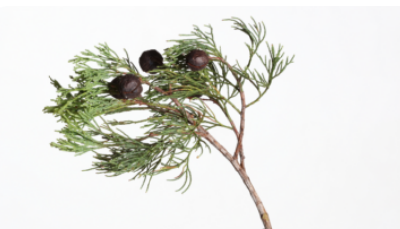

Pure Australian Blue Cypress Oil
Native from Australia, Blue Cypress trees are grown on a plantation in the northern territory of the country. No irrigation, pesticides or herbicides are used throughout the growing process. It takes up to 25 years for a tree to mature enough to produce the oil. Trees are then harvested between 25-65 years of age. The trees are cut down by hand to avoid any damage to the bark. All of the mature wood, bark and roots can be used in the production of the oil itself.
Used by Aboriginal people for thousands of years, this plant was called “Blue Gold” because of its many valuable uses and the striking color of the oil, unique in that it is the only blue essential oil derived from wood, not flowers.
Blue Cypress Oil is an intense essential oil. It has dark smoky notes at the top and hints of resinous sweetness playing in the background. This aroma also displays facets of rusty herbal undernotes, and it immediately transports you to a dark, lush forest.
Name: Pure Australian Blue Cypress Oil
INCI name: Callitris intratropica Wood Oil
Botanical name: Callitris intratropica
Pure Australian Buddha Wood Oil
Eremophila mitchellii was named in 1848 by botanist George Bentham, after Sir Thomas Mitchell, who led the discovery expedition into Australia. No less than 17 species of Eremophila have roots in Aboriginal use. The species Eremophila mitchellii occurs in the arid regions of New South Wales, Queensland and South Australia. The tree is considered somewhat invasive, though native to Australia, with over 215 species. In fact, it is not permitted to grow it in many regions of Australia and cultivation is not necessary. The plant as a whole can be sticky to the touch because of the rich resin present in the leaves and branches. Because of this, the thin leaves emit a rich smell when crushed. The deep red-brown colour is carried into the oil.
The scented wood is burnt for its pleasant aroma, while the oil, rare, unique, and multifaceted, has been used for perfumery, bath or as a perfume fixative. Unlike any other wood, this desert wood carries a sweet rosy undernote. It opens with dry woody facets and beautifully transitions into sweet floral base note. The oil demonstrates perfect harmony between dry and sweet notes and provides deep relaxation to body, mind and spirit.
Name: Pure Australian Buddha Wood Oil
INCI name: Eremophila mitchellii Wood Oil
Botanical name: Eremophila mitchellii
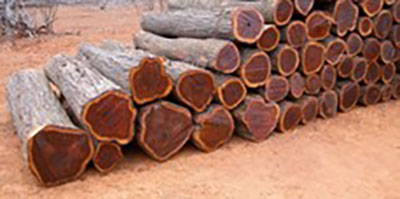

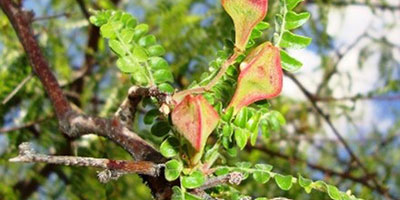

Frankincense Neglecta Oil
Frankincense is derived from the milky white sap secreted by the Boswellia neglecta tree in Kenya, which expels in the form of small “tears”. It is harvested by slashing the bark of the tree which is a process known as striping. The sap flows out and eventually hardens in the sun. This hardened sap is referred to as resin and looks like irregularly shaped, glossy transparent stones. The resin is collected and sorted for quality. The larger and lighter the resin, the better the quality.
The Greeks, Egyptians and Romans burned frankincense resin to release an incense used as an offering to those departed, and also to mask the odour of the corpse. It was valued for its powerful aroma and the white smoke it exuded when burned. Also part of various medicines to treat a wide range of ailments, its fragrance was believed to purify clothing and cleanse the home.
The Frankincense Neglecta Oil’s aromatic properties are said to promote feelings of relaxation, peace, and overall wellness. It exhibits a dark scent that is reminiscent of the earthy and musty scent of leather. Its woody aromas also have the warm balsamic scent of vanilla and amber, mixed in with a clean, refreshing scent of sweet camphor. Woody undertones mixed with overtones of spicy cumin can be detected, as well as resinous and fruity nuances.
Name: Frankincense Neglecta Oil (Organic)
INCI name: Boswellia neglecta Resin Oil
Botanical name: Boswellia neglecta
Juniper Berry Oil
Juniper is an evergreen shrub belonging to the pine family. It grows in the temperate and cold regions of the Northern Hemisphere and is native to the mountains in North America, Europe, and Asia, where it extends as far as the Himalayas. Throughout the centuries, both the branches and fruits have been used for medicinal and spiritual purposes.
This coniferous tree is identified by its sharply spiked blue-green needles. The plant produces either male or female flowers. Whilst the male variety produces a yellow blossom, the female tree delivers a blue blossom which also gives birth to the green fruit. Unlike the name this fruit is not a berry at all, but fleshy cones like those found on other pine tree species. They mature after two years, then darken to a purple or blue-black color. They are harvested in the late summer manually through careful beating of the fruit-laden branches. The ripe berries are crushed like peppercorns to extract juice and oil.
The essential oil delivers fizzy, fruity, green scents with a gin top note and gentle aromatic dry woody undertones, allowing it to find its place at the heart of aromatic ferns, accompanying similar notes. Incredibly versatile, it contains in particular pinene, sabinene, and myrcene, and is found in many personal care products, fragrances, remedies or food and beverages. Indeed, a little-known secret is that juniper berries are responsible for giving gin its distinctive flavor. In fact, the only difference between vodka and gin is the addition of juniper.
Name: Juniper Berry Oil (Organic)
INCI name: Juniperus communis Fruit Oil
Botanical name: Juniperus communis
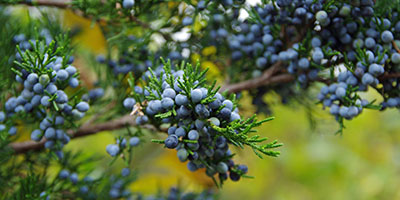

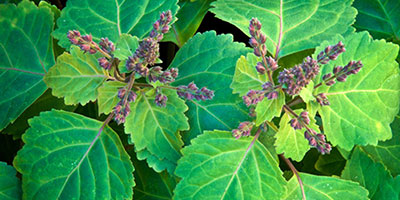

Patchouli Oil
"Patchouli” itself means “green leaf” because it comes from a herb that’s part of the mint family. This perennial species thrives in warm tropical climates. Native to Southeast Asia, it was however first developed for use in South India for medicinal purposes and, in some cultures, for herbal teas. Now, it is extensively cultivated in China, India or Madagascar as well as Indonesia, the world’s largest producer of patchouli accounting for over 80% of the global market.
The oil is produced by steam distillation of the dried leaves of Pogostemon cablin. Widely used by the fragrance industry along with citrus fruits, it is one of the most appreciated materials because of its capacity of mixing with other essential oils and giving a durable smell. Patchouli Oil demonstrates characteristic woody, warm, dry, earthy, balsamic, spicy and slightly camphoraceous aromas that add richness and depth to the blend: an ideal choice as a substantive middle or base note within the fine fragrance. Forever immortalized by its inclusion within the main structure of the “Chypre” perfume family, it can also be added in cosmetics where it is known to provide skin benefits or incense.
Name: Patchouli Oil (Organic)
INCI name: Pogostemon cablin Leaf Oil
Botanical name: Pogostemon cablin
Pure Australian Sandalwood (Indian) Oil
Commonly referred to as ‘Old Mountain’ Sandalwood, Indian Sandalwood was first recorded as a medicine in the Charaka Samhita, the first documented Ayurveda materia medica. Establishment of large scale Sandalwood (Album) plantations in Australia commenced in the early 2000s. These plantations are providing the world with a sustainable and traceable supply of Indian Sandalwood. This new production, combined with Australia’s production of native Santalum spicatum oil, indisputably establishes Australia as the largest producer of Sandalwood Oils in the world.
Santalum Album is a luxurious woody essential oil. It opens with rich creamy notes and beautifully transitions into dry woody undertones.
Name: Pure Australian Sandalwood (Indian) Oil
INCI name: Santalum album Wood Oil
Botanical name: Santalum album




Pure Australian Sandalwood Oil
Australian Sandalwood now accounts for over 80% of the world’s sandalwood supplies. These reserves are carefully and sustainably managed by the Western Australian government through annual harvest quotas and extensive regeneration efforts. The essential oil comes from the heartwood of the tree. The tree must be more than 20 years old to develop the heartwood necessary for good quality oil.
Australian Sandalwood is a luxurious woody essential oil. It opens with nutty notes and beautifully transitions into deep, woody undertones.
Name: Pure Australian Sandalwood Oil (Organic), Pure Australian Sandalwood Oil – Standard Grade, Pure Australian Sandalwood Oil – Premium Grade
INCI name: Santalum spicatum Wood Oil (syn. Fusanus spicatus Wood Oil)
Botanical name: Santalum spicatum (syn. Fusanus Spicatus)
Sandalwood Oil is the most flexible oil, as due to its creamy tonality, it can blend extremely well with almost all floral notes
Pure Australian White Cypress (Wood) Oil
This oil is obtained via steam distillation from the wood of Callitris columellaris tree. The timbers are hard and dense and are renowned for their resistance to the Australian termite population (due to the essential oil in the heartwood). White Cypress trees are abundantly present in the Flinders Ranges in South Australia and only standing deadwood is harvested for the production.
The oil is relatively new on the commercial market through its investigation began over a century ago. White Cypress (Wood) Oil opens with earthy green notes and gradually transitions into dry woody with hints of vetiver like undertone. Used as a middle-to-base note, it blends well with citrus or floral notes but may compete with other oils of strong odour personality. It has been mainly used for fragrance and flavour, and aromatherapists prize it for its grounding and stabilizing properties to calm an agitated mind and body.
Name: Pure Australian White Cypress (Wood) Oil
INCI name: Callitris columellaris Leaf/Wood Extract
Botanical name: Callitris columellaris



We can't find any products that match your criteria. Try adjusting your search or filters.
Get in touch, 24 hours a day, 7 days a week.



